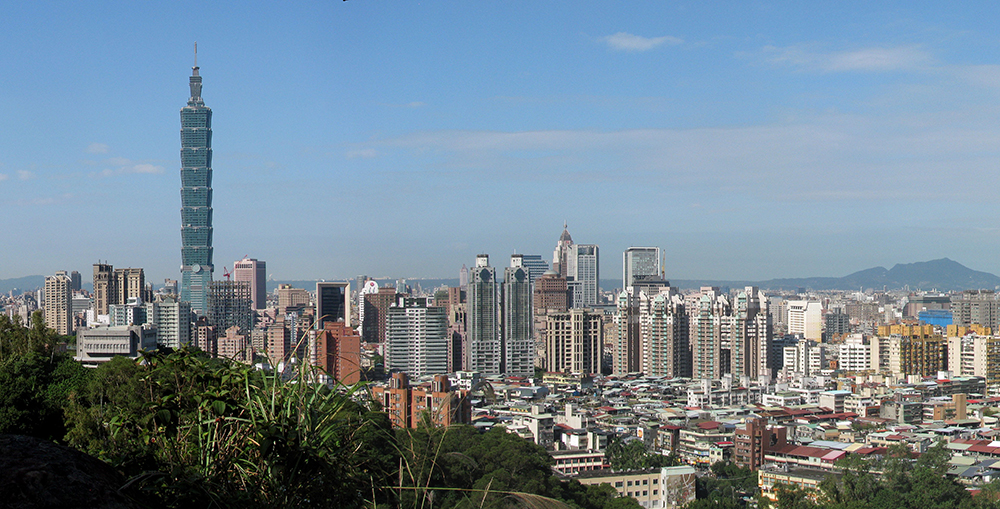 |
| Taipei, Taiwan, site of the Asia Pacific Summer School. Two CEE graduate students will travel to participate in the program on smart structures technology next week. The soaring skyscraper is Taipei 101, a 101-story building that was, for a time, the tallest in the world. (Photo Courtesy of Luenlin via Wikimedia Commons.) |
Two of CEE’s graduate students are headed to Taiwan next week for the Asia Pacific Summer School on Smart Structures Technology.
Chunhee Cho and La Sasha Walker are among fewer than a dozen students from the United States selected to participate in the program, which runs for three weeks in late July and early August.
They’ll learn more about using sensors to create “smart” structures. The information the sensors provide could control a damping system in real time during an earthquake, for instance, to lessen damage to buildings or bridges. They could help assess damage and weaknesses afterward, too. And sensors could also monitor the degradation of structures over years of wear and inform maintenance efforts.
Both said they’re looking forward to collaborating with their peers from around the world while learning about best practices they can use.
“We can talk about our research and I can find out what is the cutting edge for my field, [what are] the trends,” said Cho, a fourth-year Ph.D. candidate in the School of Civil and Environmental Engineering (CEE) whose work focuses on developing systems to assess how safe and resilient structures are.
“One of the things this conference is focused on is natural disasters,” said Walker, a second-year doctoral student. “So earthquake response—what should you do, how do we recover from that? That’s one of the things I’m looking at, how do we speed the process of recovery?”
The summer school combines lectures, labs and site visits for students from China, India, Japan, Korea, Taiwan and the United States.
Program organizers say the summer school fills gaps in traditional civil engineering curriculum, which touches on smart-structures technology only in a limited way. The Asia Pacific Summer School is also designed to connect students with international leaders in the field and inspire them to pursue collaborative, international research.
